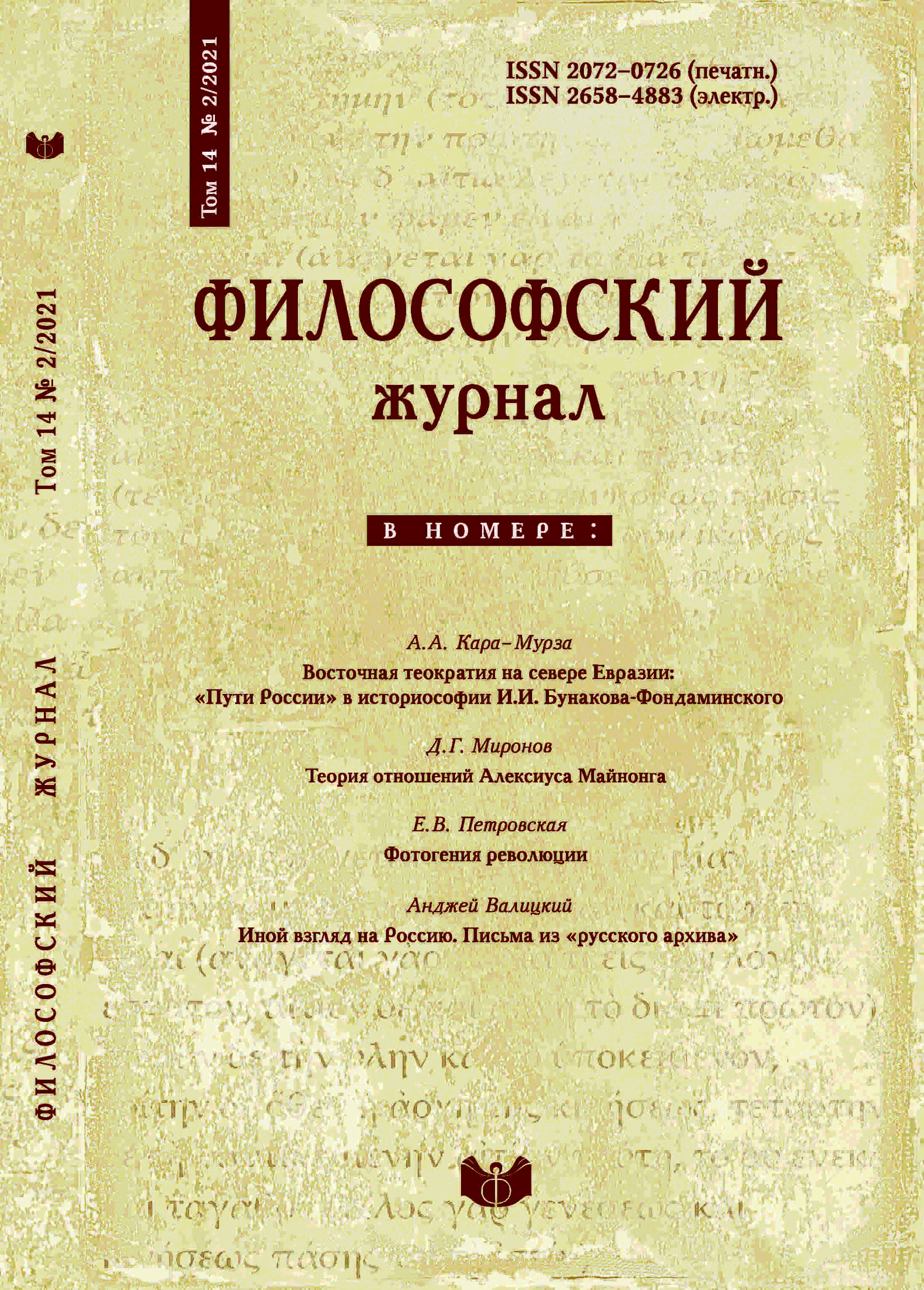The photogeny of revolution
DOI:
https://doi.org/10.21146/2072-0726-2021-14-2-111-122Keywords:
photogeny (photogénie), Etna, revolution, transformation, semiotics of forces, matter, action, correlation, Jean Epstein, Auguste Villiers de l’Isle-Adam, P.A. KropotkinAbstract
Drawing on the works of three authors, namely, Jean Epstein, Auguste Villiers de l’Isle-Adam and P.A. Kropotkin, the article attempts to lay the grounds for what might be called a semiotics of forces. Jean Epstein, a filmmaker and theorist of the new art form, is the author of an original concept of photogénie where cinema is presented as an instrument revealing the transformations of matter itself. Erupting Etna stands for the transformations in question. Villiers de l’Isle-Adam is a symbolist writer, who also mentions Etna, associating its explosive power with the chemical formulas of explosives. These formulas, integrated into his “least literary” novella, become special signs of social transformation: The writer, challenging the entire class of bourgeoisie that he deeply detests, makes use of the fear incited by the anarchists amongst it. Finally, P.A. Kropotkin, one of the leading theorists of anarchism but also an outstanding scientist and geographer, insists on the priority of transformative action over theory and every other speculation. In fact, he proposes his own version of the performative – of words changing the existing state of things – already at the end of the 19th century. In one way or another, all these writers are united by their understanding of the inherent connection between natural and social disasters (Kropotkin’s position is explicit). Described by Epstein and only once mentioned by Villiers de l’Isle-Adam, Etna becomes an element of a correlation, i.e., of a connection that is unapparent and necessary at the same time. What is implied is the relation between volcano and cinema as well as that between volcano and explosives. In both cases this relation becomes the designation of matter itself or, to be more exact, of matter in a state of flux and transformation. But this is also true of transformative action in the proper sense of the word (resulting in revolution, according to Kropotkin), whose verbal expressions always carry within themselves the energy of multidirectional forces. Etna is not merely a volcano and not just an element of a correlation; from the perspective of physics, it is synonymous with heat (scorching lava), which stands for changes in the properties of a substance, i.e., its transformation in purely physical terms. It is clear that transformation in cinema, literature as well as in social life cannot be represented directly; it is revealed only through a set of relations, namely, a semiotics of forces.






